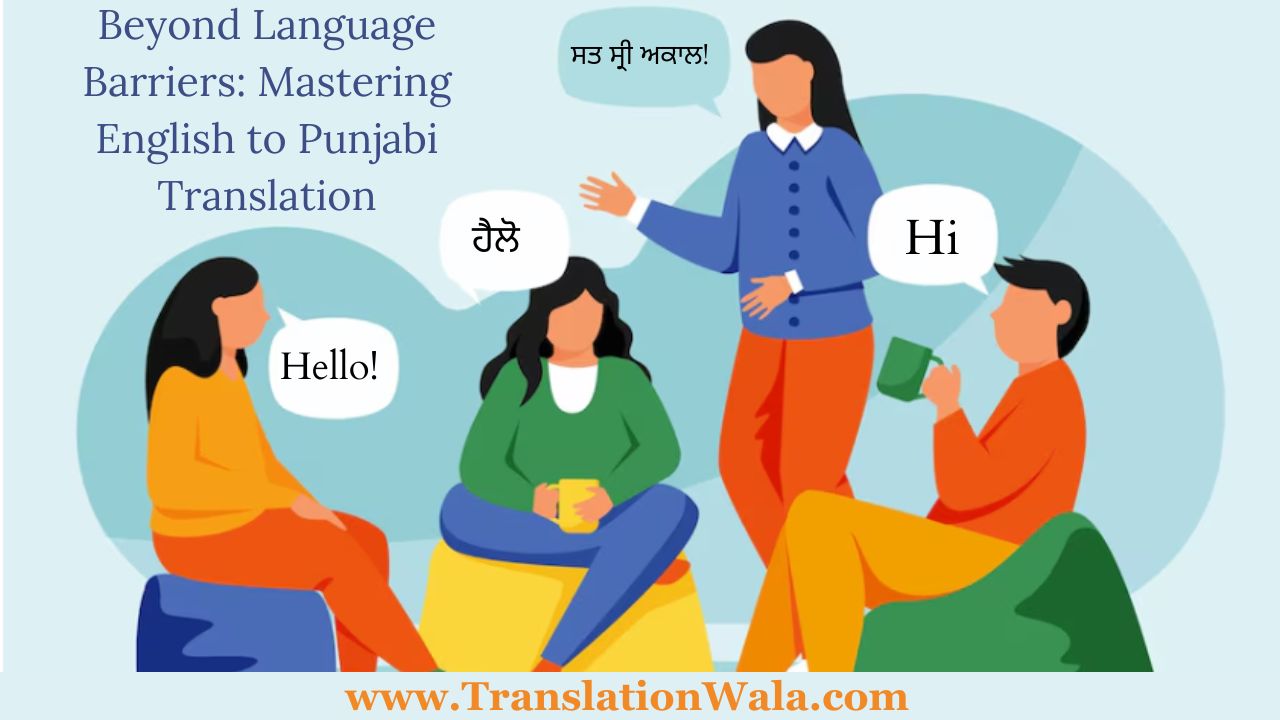The worlds of English and Punjabi are very different from one another. English is a Germanic language, which means it likes order and accuracy. Punjabi is an Indo-Iranian language that has a lot of different cultures mixed into it. It can be hard to get past these differences, but learning how English to Punjabi Translation has huge benefits. If you want to know how to deal with the cultural and language challenges that lie ahead, this blog goes into great detail about the complicated process of translation.
Understanding the Depths of Difference:
Understanding the changes between the source and target languages is the first thing that you need to do to get good at translation. Here are some of the ways that English and Punjabi are different:
- Grammar: A lot of what English means is shown through prepositions and word conjugations. In Punjabi, on the other hand, the form of word construction is easier and there are more postpositions.
- Sentence Structure: English uses the Subject-Verb-Object (SVO) structure, but Punjabi uses the Subject-Object-Verb (SOV) structure, which is more flexible.
- Vocabulary: The cultural settings of these languages have a big effect on the words they use. English has a very large science and technical vocabulary, but Punjabi is full of words and phrases that are unique to Punjabi culture and customs.
Beyond the Literal: Capturing the Essence
A good English to Punjabi translation does more than just change words. They become culture champions and make sure that the Punjabi audience understands the translated text.
- Context is King: Direct translating can make idioms, proverbs, and metaphors mean different things. A good translator knows how these phrases are used in different situations and can find Punjabi words that mean the same thing but are more appropriate for that culture.
- Respecting Register: Formal English can be translated in different ways based on who it is meant for. A translation has to know how serious the source text is and translate it into Punjabi, using either formal or informal Punjabi depending on the situation.
- Mind the Nuances: There are different types of Punjabi, and each one has its own taste. When a translator knows the target audience’s language, they can make sure that the version has the most impact.
Also Read: Breaking Barriers: English to Tamil Translation Services

Developing Your Punjabi Translation Skills:
To become good at English to Punjabi Translation, you need to put in a lot of work and try different things. Here are some methods that work:
- Immerse Yourself in Punjabi: Put the words all around you. You can read Punjabi books, watch Punjabi movies, and listen to Punjabi songs. You’ll understand the subtleties of the language better the more you use it.
- Build a Robust Punjabi Vocabulary: To improve your knowledge, use Punjabi books, online tools, and language study apps. Pay attention to learning more than just words. Pay attention to idioms and proverbs as well.
- Practice Makes Perfect: Look for chances to explain. Start with short, easy texts and work your way up to ones that are more difficult. Join online groups for translators to get comments and improve your skills.
- Seek Expert Guidance: You might want to take a training in Punjabi translation or look for help from Punjabi translators who have more experience. Their ideas and useful suggestions can be very helpful.
Leveraging Technology:
Even though machine translation tools have come a long way, they can’t replace human knowledge, especially when it comes to languages like Punjabi that have a lot of cultural nuances. On the other hand, technology can help with the translation process:
- Machine Translation as a Springboard: To get a rough idea of what the source text means, use machine translation tools. But you should always check the machine version for mistakes and make sure it fits the culture.
- Terminology Management Tools: These tools help make sure that expert terms and sentences that are used a lot are translated consistently. In particular, this is helpful for translating a lot of text.
- Computer-Aided Translation (CAT) Tools: With features like translation memory and terms files, CAT tools make the translation process faster and easier. These tools can help you translate much more quickly and accurately.
The Final Word:
As a result, English to Punjabi Translation is fun. It helps people understand each other’s cultures and communicate better. If you want to become a great speaker, it is helpful to have an understanding of the distinctions between language and culture, to improve your Punjabi language skills, and to be good at using technology. This will help people from all over the world who are Punjabi hear your word. Remember that the only way to become fluent is to work hard at it, practice, and really enjoy the beauty and depth of both English and Punjabi. Start this exciting journey and become a link between countries, one translation at a time.



